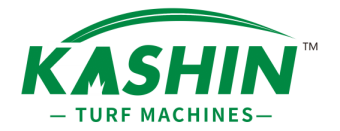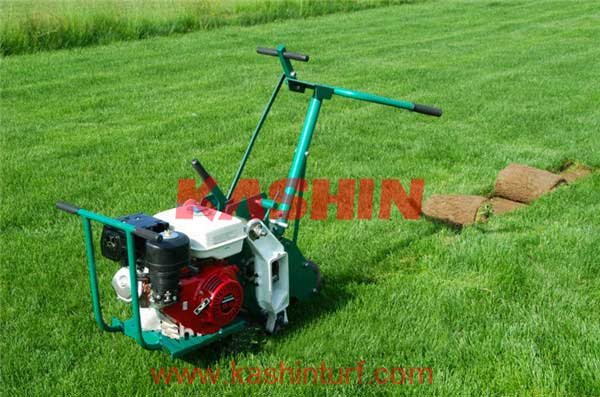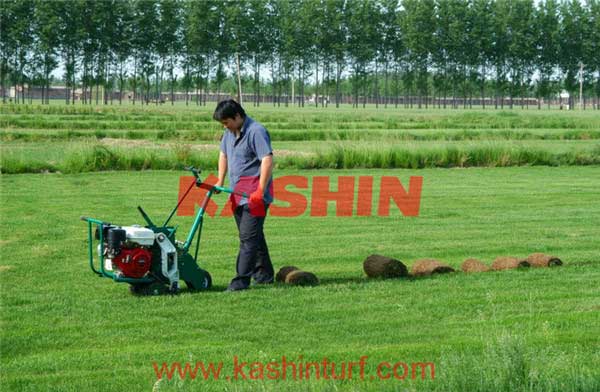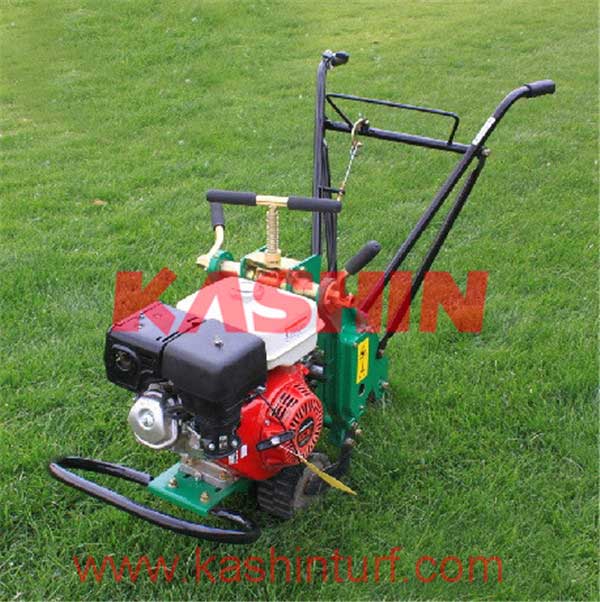Sod cutter the introduction of the use and maintenance of the machine
Author:Ricdro
Lawn cutter machine is a machine that cuts turf into turf blocks or turf rolls of a certain width, thickness and length.
The working device of the drafting machine is a turf cutter. It has two structural types: one is composed of two L-shaped vertical side knives and a horizontal bottom knife. The side knives cut vertically to form the width of the turf. The bedknife cuts the root of the turf to form the bottom of the turf, which is the thickness of the turf. The other is composed of a U-shaped blade. The horizontal blade of the blade cuts the bottom of the turf, and the vertical blade cuts the two sides of the turf, so that the turf is completely separated from the ground. Nowadays, U-shaped blades are more commonly used, and vibrating blades are often used. This blade is easy to enter the soil, can reduce the cutting resistance, and is not easy to clay. According to the different supporting power, the drafting leather machine has a walking-controlled self-propelled type and a tractor-mounted type.
1.sod cutter the preparation before using the leather machine
(1) Check the tightness of each connection part, whether each handle is flexible and reliable.
(2) Check the gear oil in the gearbox, add the specified gear oil, and the oil level is 1/2 of the height of the reduction box.
(3) Add lubricating oil to each lubrication point.
(4) Adjust the tension of the V-belt, the tension of each is 100~200N. Press the V-belt by hand, and it can be slightly pressed down by 3 to 5 cm.
(5) The tail wheel is inflated, and the air pressure is 98~295kPa.
The walking-operated self-propelled drafting leather machine (as shown in the figure below) is currently the most widely used model. Its cutting device generally uses a vibrating U-shaped blade driven by an eccentric wheel. Generally equipped with 4-7kW gasoline engine as power, the power of the engine is driven by V-belt and chain transmission or gear transmission, driving the driving wheel located in front of the blade, so that the drafting machine walks and the cutting knife is used to cut the turf.
-
Turf cutter the operation steps of the leather machine
(1) Start the diesel engine correctly and make it run at low speed.
(2) Depress the cutter clutch handle, engage the cutter power, and increase the throttle to 1/3 to make the cutter run (reciprocating vibration).
(3) Adjust the cutting depth of the cutter. Insert the cutter into the soil, and tighten the adjustment handle after reaching the depth of the soil.
(4) Depress the travel clutch, engage the travel power, increase the throttle, and start work. When entering normal operation, the throttle can be locked and positioned.
(5) The throttle can be reduced when parking temporarily, so that the diesel engine output shaft clutch is automatically released.
(6) When stopping the operation, the cutter should be lifted.
(7) When running a short distance on the ground, the cutter should be lifted, the cutter power should be cut off, the traveling clutch should be engaged, and the cutter should be moved slowly. During long-distance transportation, it should be transported on a transport vehicle to avoid abrasion of the pattern of the rubber jacket of the driving wheel.
-
Sod cutter machine maintenance
(1) The oil cup at the rotating part of the connecting rod should be filled with lubricating oil (butter) in time, and the bearing should be filled with lubricating oil after working for 50 hours. It is strictly forbidden to run without oil.
(2) The gearbox oil level should be kept between 1/3~1/2 of the gearbox height, and the gear oil should be replaced every 3 months or 150 hours of work.
(3) A few drops of engine oil should be frequently added to the joints of the operating levers.
(4) Inflate the tail wheel in time to maintain pressure. Adjust the belt tension frequently to prevent the belt from being too tight to damage the belt, damaging the bearing and other parts, and to prevent slipping when it is too loose.
(5) Rubber wheels should not be in contact with chemicals such as oil to prevent accelerated aging. Store in a dry and dark place.
(6) It is strictly forbidden to work on plots with bricks, gravel and tree roots to prevent damage to the cutter.
(7) Clean the machine frequently to ensure cleanliness.
(8) Non-operating transportation shall not drive on hard roads to prevent accelerated wheel wear.
-
Adjustment of the inclination of the cotton picking head
By adjusting the length of the boom on both sides of the cotton picking head beam, the front roller is 19 mm lower than the rear roller during machine operation, which makes the ingot picking contact more cotton and allows the residue to flow out from the bottom of the cotton picking head. The length of the boom is the pin-to-pin distance of 584 mm, the two lifting frames should be adjusted in the same way, and the tilt adjustment should be done in the cotton row.
-
Adjustment of the pressure plate gap
The distance between the pressure plate and the tip of the ingot removal can be adjusted by adjusting the nut on the hinge of the pressure plate, about 3~6 mm. Through practice, it should be adjusted to the tip clearance of the pressure plate and the ingot removal is about 1 mm. The assembly will leak cotton, and if the gap is too small, picking the ingot will create a deep groove on the pressure plate and damage the parts. Even the friction between picking the ingot and the pressing plate will produce sparks, which becomes a hidden danger of machine fire.
-
Adjustment of spring tension of pressure plate
This is achieved by adjusting the relative position of the adjusting plate and the round hole on the bracket. From rotating the adjusting plate until the spring just touches the pressure plate, the front cotton picking head continues to rotate and adjust to 3 holes on the adjusting plate, and the rear cotton picking head is adjusted to 4 holes, aligned with the fixed holes on the bracket, insert flange screws, also can be adjusted to 4 front and 4 back. When adjusting, the pressure plate on the back picking head should be adjusted first, and the pressure plate on the front picking head should be tightened only when necessary. If the spring pressure is too small, the picked cotton will have less impurities, but the remaining cotton will increase; if the pressure is too high, the net picking rate will increase, but the cotton impurities will increase, and the wear of the parts will increase.





